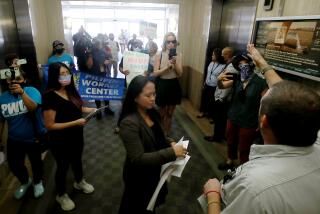Spotting the Warning Signs of Employer 401(k) Abuse
- Share via
Fraud involving 401(k) retirement savings programs is a growing problem, but employees can take several basic steps to protect their funds and minimize their risk, experts say.
The Labor Department announced this week that a six-month investigation found that some financially troubled small- and mid-size companies have violated 401(k) plan rules--and federal pension laws--by delaying transmission of money to plan administrators, instead using the funds to pay other corporate expenses, and that some stole employee money outright.
“In the early part of the year, we noticed an increase of complaints coming from all regions of the country,” Labor Secretary Robert B. Reich said Wednesday. “What we are seeing now ranges from carelessness to outright fraud. Some companies are using these funds like checking accounts.”
Government officials acknowledge that labor investigators cannot look at every plan and that there is no way to protect workers unless they take steps to protect themselves.
There are now 140,000 or so 401(k) plans operating in the United States, with $650 billion in assets, making them one of the most popular and fastest-growing retirement savings vehicles around.
With a 401(k) plan, workers save and invest their own money for retirement through automatic savings programs set up at work. When the plans are operated correctly, employees decide how much to contribute and the employer then withholds the amount from a worker’s paycheck and sends it on to a plan administrator, who then invests the contribution, usually in a mutual fund or insurance contract.
As of Oct. 6, the Labor Department had launched more than 300 investigations of suspected 401(k) plan abuses. About 100 of the probes have been closed, resulting in payments of $2.6 million to plan participants. (There are no figures available on how much employee money has been lost.) Officials say they began to see the problem during the late-1993 recession but that it has become worse even as the economy has improved.
“The violations are fairly easy to substantiate,” said David Ganz, regional director of pension and welfare benefits administration at the Labor Department office in Los Angeles. “The thing that is hard is finding the money.”
In many cases, diverted 401(k) money was simply spent to pay company suppliers, to meet the payroll or to handle some other daily expenditure. Once a company dips into worker retirement funds to make such payments, the company’s financial woes tend to snowball, Ganz added. The company’s chances for long-term survival erode every month the practice continues. The chances for workers to recover their money diminishes too.
“That’s why it is particularly important for participants to be alert,” Ganz says. “Once there is a large diversion, it is hard to find enough money to pay participants. But if we get in early--within the first three months--you have a much better chance.”
The Labor Department will hold a news conference Tuesday8 to publicize warning signs that should help workers spot problems with their 401(k) plans.
“I don’t want to unduly alarm employees who are relying on 401(k) plans for retirement,” Reich said, pointing out that the Labor Department has not spotted any problems with large companies diverting worker funds and that the vast majority of small firms handle their worker retirement programs properly. Still, Reich said he fears that the problems the department has encountered so far could mean there are many, many more.
“Industry experts tell me that the problems may be far greater,” he said. “Employees should take some reasonable precautions.”
What are the warning signs?
* Severe financial distress: The vast majority of problems have been detected at small to mid-size companies that were experiencing some degree of financial woe, labor officials say. If the company is publicly owned and issues financial statements, these woes are easy to spot. They are spelled out in annual reports to shareholders and in auditors’ opinions.
However, many of the small companies that have had pension problems are private and don’t issue such reports. In these cases, look for more subtle signals. Are payroll or expense checks frequently late? Have checks bounced? Are suppliers complaining about past-due bills? Have equipment orders been canceled without explanation? Do former workers complain that the company is slow to send severance or retirement checks?
* Mismatches: Monitor your accounts, adding up your contributions and, when applicable, company contributions during each 401(k) plan reporting period. If there is a mismatch--particularly when the plan administrator reports that the contributions have been less than you expect--call the company or the plan administrator to find out why, labor officials suggest.
Federal labor laws say that companies must forward worker contributions to 401(k) plan administrators promptly, but companies are not technically in violation of the law unless contributions are more than 90 days late, Reich said. So some mismatches can be the result of a delay that’s not a legal violation. Nevertheless, if the company consistently holds on to worker payments until the last possible moment, consider it a warning sign.
* Delays: If former workers tell you they’re having trouble getting the company to remit pension payments when they are due, consider that a serious red flag. In addition, pay attention to when periodic 401(k) statements are sent out. If these statements are late--or come at inconsistent intervals--check further to see if the company is making payments in a timely fashion.
If you suspect there are problems with your plan, call the plan administrator and ask about your account. Are the payments being made? Does the amount of each payment correspond with the amount that’s deducted from your check, plus any promised employer matching contributions? If not, call a local Labor Department office immediately. These offices are listed in the government section of the white pages of the phone book.
More to Read
Inside the business of entertainment
The Wide Shot brings you news, analysis and insights on everything from streaming wars to production — and what it all means for the future.
You may occasionally receive promotional content from the Los Angeles Times.










